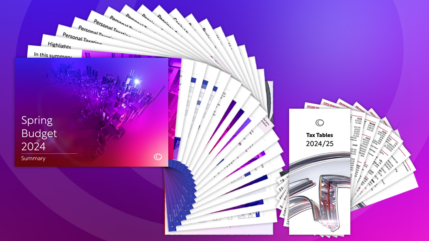“The hardest thing to understand in the world is the income tax”
(Albert Einstein, Theoretical Physicist 1879 – 1955)
The proposed dividend tax changes announced by George Osborne in the 2015 budget will have a deep impact on savings and investments. It is estimated that the new regime will raise £2.5 billion in additional tax in the first year. Instead of bringing dividends into line with other income, the new charge appears to be the latest stealth tax.
The basic details are that, from 6th April 2016, the tax credit on dividends will be abolished. There will be a tax-free dividend allowance of £5,000 and dividends will be taxed at special rates according to whether the income falls into the investor’s basic, higher or additional rate bands.
Current Regime until 5th April 2016
Under the current system the tax is charged on a dividend plus its accompanying tax credit of 10%. The total dividend plus tax credit is calculated by dividing the dividend payment by 0.9. A dividend payment of £900 is a dividend plus tax credit of £100 (£900 dividend by 0.9). The tax credit will be abolished after 5 April 2016.
A non-tax payer cannot reclaim the 10% tax credit.
If you receive a dividend in the current tax year and you are a starting rate or basic rate taxpayer, the 10% tax credit satisfies the tax you must pay on dividend income, so there is nothing more to pay.
If you receive a dividend in the current tax year and you are a higher rate taxpayer, you pay a further rate of 22.5% per cent on the gross dividend (making a total of 32.5% including the 10% dividend tax credit). So, on a dividend of £900 plus £100 tax credit, the higher rate tax charge for 2015/16 is £225.
If you receive a dividend in the current tax year and you are an additional rate taxpayer, you pay a further rate of 27.5% per cent on the gross dividend (making a total of 37.5% including the 10% dividend tax credit). So, on a dividend of £900 plus £100 tax credit, the additional higher rate tax charge for 2015/16 is £275.
New Regime from 6th April 2016
From 6th April 2016, all taxpayers will have a tax-free dividend allowance of £5,000 a year. After this, the rate of tax payable on dividends will depend upon the investor’s other taxable income. If dividend income takes an individual into the next tax band, they will pay the higher dividend rate on that portion of the income.
| Dividend Tax Rates | 2016/17 |
| Non-taxpayers | 0% |
| Basic rate taxpayer | 7.50% |
| Higher rate taxpayer | 32.50% |
| Additional rate taxpayers | 38.10% |
The tables below compare this tax year with the next.
2015/16 Tax Year
| Dividend Tax Rates | Net Dividend | Tax Credit | Additional Tax | Dividends after all tax |
| Non-taxpayers | £5,000 | £555.55 | £- | £5,000 |
| Basic rate taxpayer | £5,000 | £555.55 | £- | £5,000 |
| Higher rate taxpayer | £5,000 | £555.55 | £1,250* | £3,750 |
| Additional rate taxpayer | £5,000 | £555.55 | £1,528* | £3,472 |
* The tax rate payable is based on a nominal gross dividend, which is the net dividend plus the notional tax credit
2016/17 Tax Year
The table below shows the amount of tax payable on dividends in excess of the £5,000 allowance.
| Dividend Tax Rates | Gross Dividend | Tax Credit | Additional Tax | Dividends after all tax |
| Non-taxpayers | £5,000 | £- | £- | £5,000 |
| Basic rate taxpayer | £5,000 | £- | £375 | £4,625 |
| Higher rate taxpayer | £5,000 | £- | £1,625 | £3,375 |
| Additional rate taxpayer | £5,000 | £- | £1,905 | £3,095 |
An investor in receipt of dividend income in excess of £5,000, will potentially be worse off under the new rules depending on which tax bracket they fall into.
Conclusion
The proposed changes from 6th April 2016 will represent a number of planning opportunities.
Married couples – Consider spreading your taxable share portfolios between two people to make full use of each spouse’s £5,000 allowance. Also make full use of your personal allowances and basic-rate tax bands where applicable</p
Use tax wrappers – Make use of ISA’s as the dividends will grow tax free and any withdrawals would not be subject to tax. If you have significant share holdings outside ISAs, it may be worth starting to transfer them. Doing so will of course involve selling and buying back the shares, which could trigger a capital gains tax (CGT).</p
Reduce taxable Income – Reducing your other taxable income could reduce the amount of dividend tax you pay. Consider transferring income bearing assets such as cash deposits to a lower earning spouse, or deferring withdrawals from a drawdown pension until a new tax year.
Offset with pensions tax relief – Consider making a pension contribution to reduce dividend tax liabilities by taking advantage of the tax relief on contributions.
Offshore bonds – Dividend income within an offshore bond grows almost free of taxation, although there may be a small amount of withholding tax. Investors only pay tax when gains are withdrawn, although withdrawals of up to 5% of the original capital can be taken without an immediate tax charge. A bond withdrawal could be deferred until an investor is a basic-rate taxpayer, thereby reducing the tax charge to 20%.
These measures have yet to be finalised. As ever, your Courtiers adviser will be happy to guide you through the changes and help you with your future planning needs.













